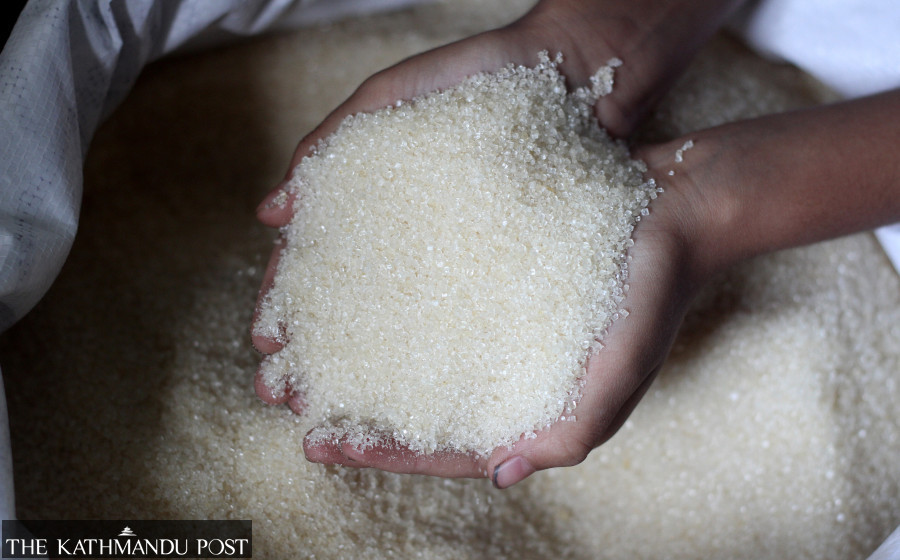Editorial
A bitter taste
Nepal’s high dependence for sugar on other countries is a self-inflicted wound.
Many Nepali kitchens have long lost their sweetness owing to the prolonged sugar shortage. Even when it is available, the sky-high price (Rs115.50 a kg) has added to the burden of consumers beset by ever-rising inflation. Meanwhile, the country is facing further hurdles in sugar import as India—a major exporter to Nepal—has asked for a premium price. In light of this, officials say Nepal may have to turn to Pakistan to explore a cheaper option.
There is a bitter tale behind the shortage of the sweet stuff in Nepal. Sugar mills have repeatedly failed to pay sugarcane farmers well. In 2018, the farmers took the issue to the government, and a cash subsidy scheme was announced. While it buoyed some farmers, the problem persisted, and they began protesting against the sugar mills and the government, demanding justice. This issue gained much traction in the past few years, but their voices are yet to be heard. Many sugarcane farmers, in turn, have given up growing canes and have shifted to other cash crops.
Nepal’s annual sugar demand is around 270,000 tons. But the mills produce only around 120,000 tons, and private sector imports and government-owned trading agencies cover the shortfall. The once-booming cash crop, which occupied 26,000 hectares of land, has now shrunk to one-fourth of that land as farmers seem to have lost faith in the lofty government promises. According to the Ministry of Livestock Development, sugar output is decreasing, from 3.67 million tonnes on 78,609 acres in 2017-18 to 3.18 million tonnes on 64,354 acres in 2020-21.
Importing commodities is not always feasible as the countries can raise the price of imports, overburdening our economy. Take the recent case of the Indian government offering prices with 25 percent mark-up on the prevailing prices. Worse, sugar production is declining, and prices are soaring globally, partly due to El Nino-related crop damages in Asia. India, the second-biggest sugar producer in the world, banned sugar exports last month to save enough for itself and to help control domestic food price inflation. This year’s erratic monsoon rain in India is expected to reduce its next sugar harvest as well. The country took a similar step in the export of rice a few months back, again impacting Nepal.
Due to the authorities’ apathy, Nepal is far from being self-sufficient in essential commodities, including sugar. The country spends around Rs3 billion on sugar imports each year, and according to reports, in the last fiscal year alone, it imported goods worth Rs1.61 trillion. Nepalis have often suffered from their dependency on neighbouring and other countries—who can forget the trauma of the 2015 lockdown? So instead of begging this or that country for regular supply, the government should heed sugarcane farmers and help them grow crops. For this, the federal government, in coordination with the local level, should work to reduce market risk for farmers and provide sufficient sugar production incentives. With the United Nations Food and Agricultural Organization predicting a 2 percent decline in global sugar production, Nepal would be wise to consider ways to increase production domestically. If not, the situation is sure to go from bad to worse.




 16.09°C Kathmandu
16.09°C Kathmandu














